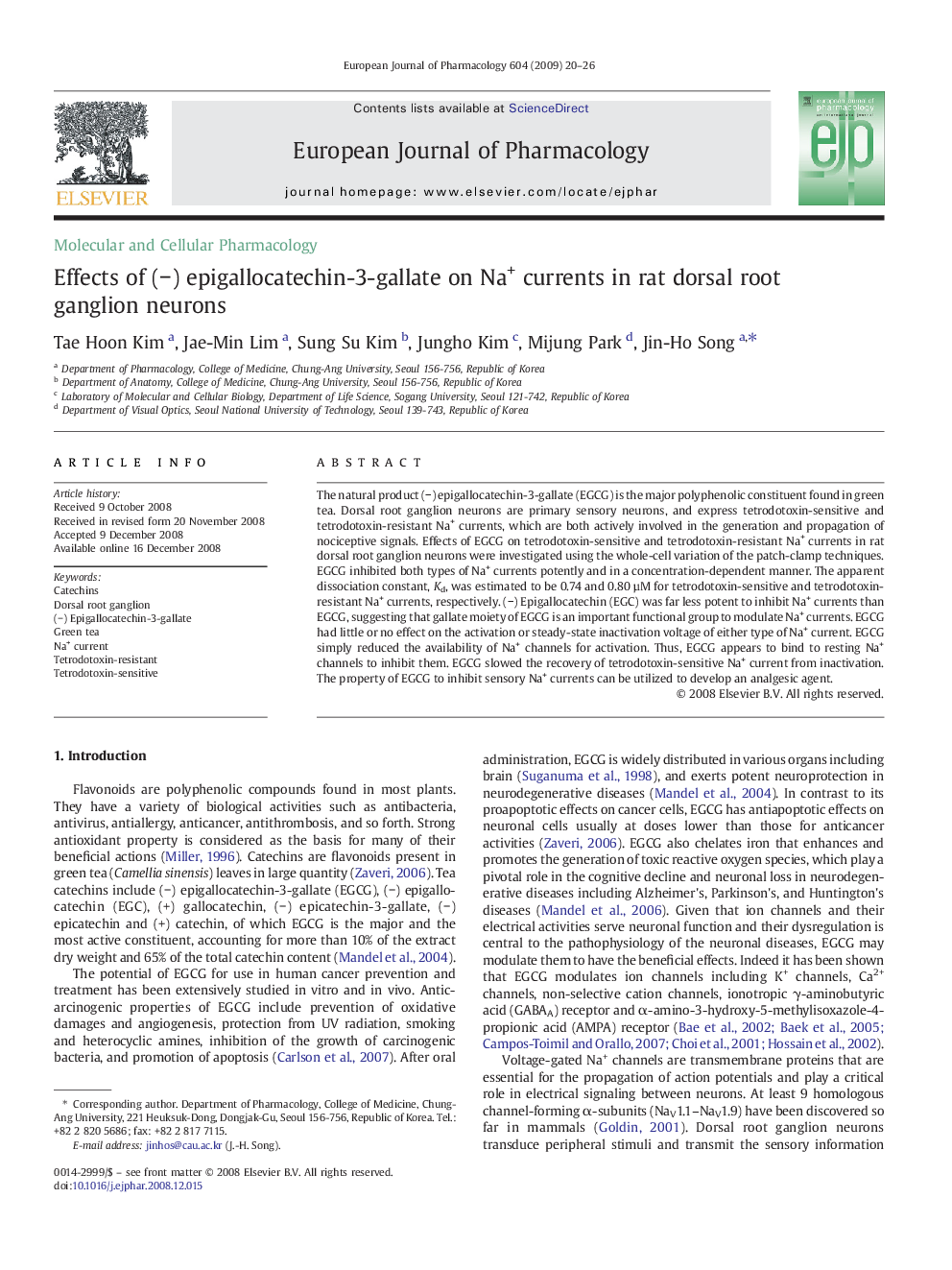| Article ID | Journal | Published Year | Pages | File Type |
|---|---|---|---|---|
| 2534628 | European Journal of Pharmacology | 2009 | 7 Pages |
The natural product (−) epigallocatechin-3-gallate (EGCG) is the major polyphenolic constituent found in green tea. Dorsal root ganglion neurons are primary sensory neurons, and express tetrodotoxin-sensitive and tetrodotoxin-resistant Na+ currents, which are both actively involved in the generation and propagation of nociceptive signals. Effects of EGCG on tetrodotoxin-sensitive and tetrodotoxin-resistant Na+ currents in rat dorsal root ganglion neurons were investigated using the whole-cell variation of the patch-clamp techniques. EGCG inhibited both types of Na+ currents potently and in a concentration-dependent manner. The apparent dissociation constant, Kd, was estimated to be 0.74 and 0.80 µM for tetrodotoxin-sensitive and tetrodotoxin-resistant Na+ currents, respectively. (−) Epigallocatechin (EGC) was far less potent to inhibit Na+ currents than EGCG, suggesting that gallate moiety of EGCG is an important functional group to modulate Na+ currents. EGCG had little or no effect on the activation or steady-state inactivation voltage of either type of Na+ current. EGCG simply reduced the availability of Na+ channels for activation. Thus, EGCG appears to bind to resting Na+ channels to inhibit them. EGCG slowed the recovery of tetrodotoxin-sensitive Na+ current from inactivation. The property of EGCG to inhibit sensory Na+ currents can be utilized to develop an analgesic agent.
